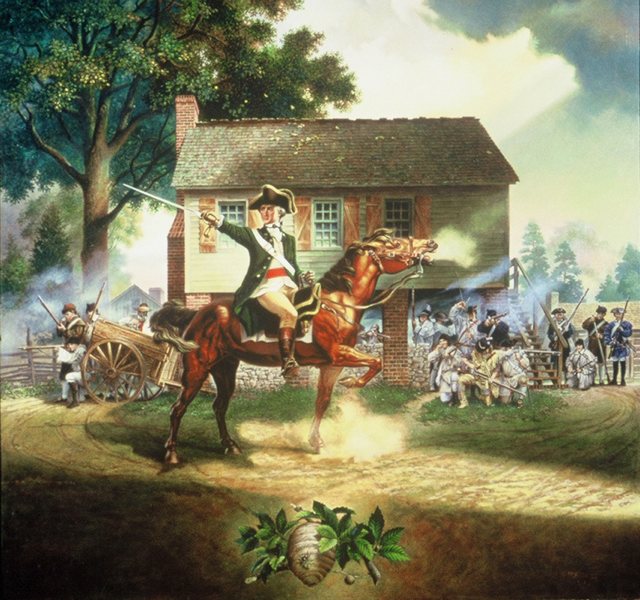By Werner Willis

SN Paper Lithograph Edition of 950 size 17″ X 17″
The Hornet’s Nest
Charlotte, North Carolina 1780
William Richardson Davie was barely twenty and fresh out of the College of New Jersey, today’s Princeton University, when the American colonies’ desire for independence exploded into open warfare. He developed a great passion for frontier battle and took delight in circumventing British plans for the invasion of the Carolinas. True to his character, Davie and about 150 patriots attempted to stop the British invasion of North Carolina at Charlotte on September 26, 1780.
Mecklenburg in 1780 included the area that would become the counties of Gaston, Cabarrus, and Union. The town of Charlotte was situated on rising ground and contained about twenty houses built on two streets, known today as Trade and Tryon, which crossed each other at right angles. In the intersection stood the courthouse, a frame building raised on eight brick pillars ten feet from the ground. A waist-high rock wall built between the pillars enclosed an area that served as the town market.
Davie posted one company behind the rock wall under the courthouse and the other companies in advance of the courthouse on East Trade Street to wait for the invading British army led by Lord Cornwallis. At daybreak the chilly silence was shattered by the snorting horses of the advancing cavalry which was followed by light infantry and the entire British army. The American militia was eventually forced back to the courthouse, but not until the assaulting cavalry was repulsed three times and a “vexed” Cornwallis was forced to admonish his troops. “Legion, remember you have everything to lose but nothing to gain.” Then the reinforced legion infantry pressed forward to rout the small band of American militia.
Outnumbered by almost ten to one, Davie’s inspired soldiers kept their promise to give seasoned British regulars and charging cavalry “some earnest of what Lord Cornwallis might expect in North Carolina.” This initial resistance spirited up the people and led to further attacks on occupying British forces causing them to term the area a “hornet’s nest” of rebellion. The name is now a source of pride.
Portrait of Davie taken from original painting by Eliza Mirbel